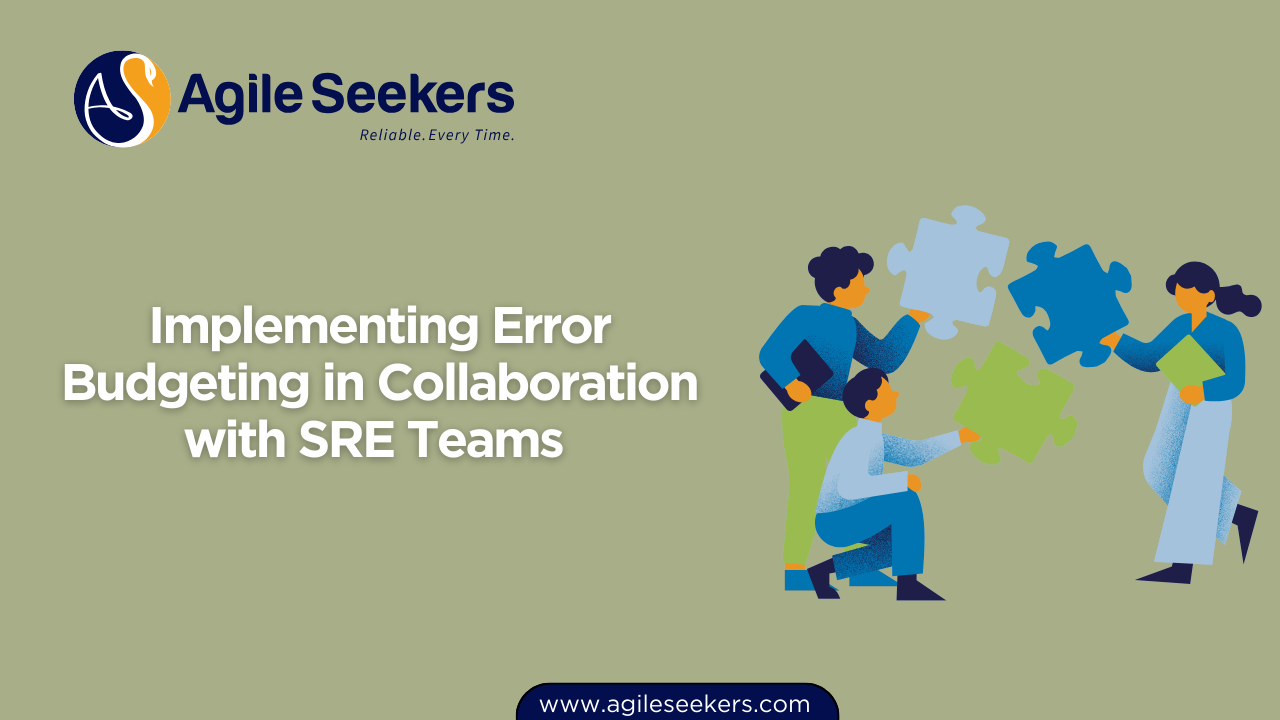Implementing Error Budgeting in Collaboration with SRE Teams

Error budgeting is one of the most practical strategies for aligning engineering and business objectives. It enables a structured way to manage reliability while continuing to deliver features and improvements. Site Reliability Engineering (SRE) teams play a pivotal role in defining, monitoring, and enforcing error budgets. When implemented well, error budgeting becomes a shared commitment across development, operations, and product teams.
What Is an Error Budget?
An error budget is the permissible amount of downtime or service degradation that a system can afford over a given period without breaching the agreed-upon reliability target. It is derived from the Service Level Objective (SLO).
For example, if your SLO states 99.9% uptime per quarter, the remaining 0.1% (or roughly 43 minutes per month) is your error budget. This budget acts as a tolerance threshold—teams can "spend" it on riskier changes or innovation, as long as reliability doesn't fall below the target.
Why SREs Are Central to the Error Budget Model
SRE teams manage the trade-off between innovation and reliability. They track error budgets closely, observe patterns, and collaborate with product and engineering teams to make informed decisions on releases. Without SRE involvement, error budgets can become theoretical or misaligned with operational realities.
That’s where Product Managers also step in. If you’re certified with a SAFe POPM Certification or handle roadmap ownership, collaborating with SREs on error budgeting ensures a balance between velocity and system stability.
Steps to Implement Error Budgeting with SRE Teams
1. Define SLIs and SLOs Collaboratively
Start by identifying the key Service Level Indicators (SLIs) that truly reflect the user experience—such as request latency, availability, or error rates. Work with SREs to establish realistic SLOs based on historical data, business expectations, and user tolerance. SLIs and SLOs should be measurable, automated, and tied directly to the user journey.
2. Establish a Shared Understanding of Budget Consumption
All stakeholders—engineering, product, QA, and ops—should understand what it means to “spend” the error budget. Document scenarios that consume the budget: production incidents, elevated error rates, partial outages, etc. Make budget status visible through dashboards and alerts to encourage accountability.
3. Enforce Policies Based on Budget Status
If the error budget is healthy, teams may proceed with deploying new features or experiments. If the budget is nearly exhausted or breached, it may trigger a freeze on production changes. These guardrails reduce blame and create an incentive to prioritize quality engineering work before pushing additional risk into the system.
4. Align Roadmap Planning with Reliability Goals
Incorporate error budget trends into your roadmap discussions. When planning large initiatives or releases, consider the cost in terms of budget spend. A product backlog that ignores technical debt or system fragility will cause budget overruns.
This is where PMP certification training comes in handy. It helps project managers quantify risk and communicate technical implications effectively with stakeholders.
5. Conduct Postmortems with Budget Impact Analysis
After every incident, analyze how much of the error budget was consumed. Did the incident breach the SLO? Was the alerting timely? Could automation have prevented it? Postmortems should be blameless but data-driven, helping teams learn and adjust future plans accordingly.
6. Share Budget Reports in Retrospectives
Bring budget insights into your agile ceremonies. Weekly or sprint reviews should include a section on error budget health. This visibility helps the entire team internalize the trade-offs between quality and speed. It also sets the context for prioritizing tech debt, observability improvements, and test coverage.
Benefits of Error Budgeting with SREs
- Predictable Risk Management: Error budgeting introduces a consistent, metric-driven way to assess and control risk.
- Stronger DevOps Collaboration: Shared responsibility across dev and SRE teams reduces silos and finger-pointing.
- Informed Decision-Making: Product and business leaders can make prioritization decisions with reliability data in hand.
- Encourages Engineering Maturity: Teams begin to value test coverage, automation, and observability as levers to stay within budget.
Challenges to Watch Out For
- Lack of Alignment: When product and SRE teams define SLOs independently, the budget will always feel unfair or arbitrary.
- Overly Aggressive Targets: Unrealistic SLOs will be breached frequently, demoralizing teams and eroding trust in the process.
- Blame Culture: If budget breaches trigger blame, teams will hide problems or manipulate metrics. The model only works in a learning culture.
Best Practices for Long-Term Adoption
Automate Everything You Can
From error rate tracking to dashboard updates and notifications, aim to automate budget monitoring. Manual tracking adds friction and delays, especially during critical moments.
Tailor Budgets Per Service
Not every system requires the same SLO. A payment service may have tighter reliability thresholds than an internal analytics dashboard. Define budgets per service, aligned with their business impact.
Integrate into Deployment Pipelines
Make error budget status a gating condition in your CI/CD pipelines. If a deployment will push the system beyond the allowed budget, block or delay the rollout until conditions improve.
Revisit SLOs Quarterly
SLOs are not set in stone. As your architecture, user base, or traffic changes, revisit your SLOs and budget definitions. Quarterly SLO reviews ensure the system evolves with the business context.
How This Ties Back to Agile and Project Roles
Project managers who undergo Project Management Professional certification gain a solid framework for stakeholder alignment and risk governance. These skills directly support error budgeting strategies in cross-functional environments.
Likewise, professionals who complete SAFe POPM training are equipped to bring a systems-thinking mindset, connecting product goals with engineering constraints through constructs like WSJF, team PI Objectives, and ART-level prioritization.
Final Thoughts
Error budgeting is not just a reliability concept—it’s a cultural shift. When product, engineering, and SRE teams share accountability for uptime and innovation, organizations reduce friction and build more resilient systems. It empowers teams to take calculated risks without compromising stability. And most importantly, it anchors system reliability to business value—making every product decision a smarter one.
Also read - Driving Adoption Metrics Through Product-Led Growth Strategies
Also read - Building Experimentation Pipelines with Feature Toggle Services




















